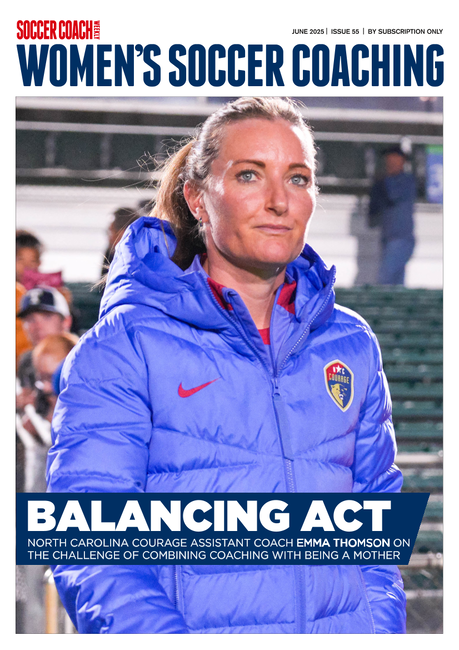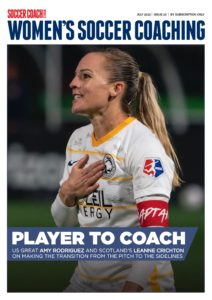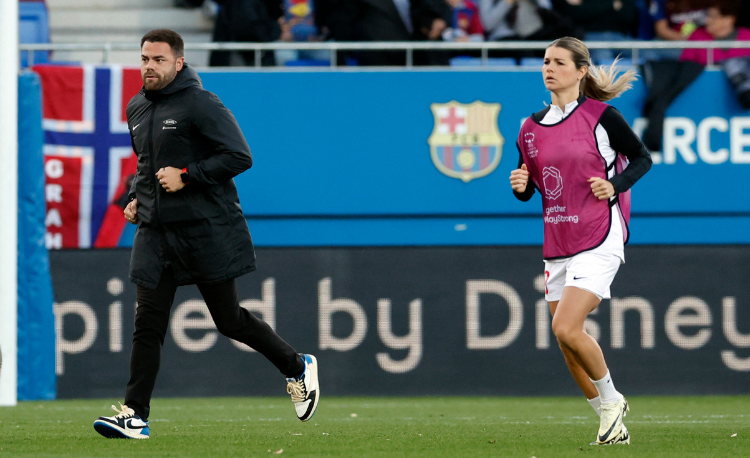You are viewing
1 of your 3 free articles
What makes an effective phase of play session?
Rob McKay talks us through how to design and deliver phase of play sessions to get the most out of them
I was fortunate enough to be invited to observe a training session delivered by a talented young coach who wanted advice on how to coach an effective phase of play session.
Phase of play (POP) practices are realistic practices designed to simulate specific sections of play within a game. They often result in a very effective session for players, given that they can be very good for replicating the realism of a match and providing players with clear pictures of certain situations and lots of decision-making opportunities. However, they can also be very physically demanding, mentally challenging and may have limit players opportunity for repetition and touches of the ball.
They can also be quite challenging for coaches to design and execute.
Narrow your focus
One of the benefits of doing a POP is being able to really narrow the focus of your topic. For example, you may have a POP session around third-man runs when the forward makes a run onto the wing in a 3-4-1-2 formation. That doesn’t mean that the players won’t focus on other things within the practice, but the first aim is to create opportunities for this within the practice, and the main aim is to make sure your coaching points are relevant to the topic.
Design and set up
One of the challenges of POP practices is that it can often require a set number of people to make the practice work. Additionally, you may require a much bigger space to create realistic distances between the players. If you’re someone who suffers from a lot of last-minute dropouts and works on less than a half pitch, then it may be a challenge to find the relevant success.
When considering where your players go, it’s important that its relevant to your game model. In the example mentioned, the team play a 3-4-1-2 system with the focus being on third-man runs from the middle when the forwards pull wide. In this case it’s important that the relevant players are included in the practice. You don’t want to coach players in a formation that they then don’t play on a matchday.
On the flipside it’s important to consider the challenge that you’re setting the players; if you play with a back three but you play against a back four most weeks then set your opposition up to challenge your players in the way they will be challenged on matchday.
Can you set the practice so that the players are able to get initial success? In the example mentioned, with 14 players available it may be that seven attacking players are needed for the possession team to ensure they maintain the right balance in their shape. Although this may mean the out of possession team are limited to six outfielders and a goalkeeper, this allows the possession team to focus on the decision-making element and get early success.
Introducing the practice to your players
When you introduce the practice to your players there’s no correct/incorrect way in which to do this if they understand it. You may want to talk to them about it with the use of a tactics board or you might put them into shape and walk it through with them as a demonstration.
There is merit to the suggestion of giving your players just enough information to start the practice and then giving them the freedom to figure the rest out. If you’re a coach with a limited amount of coaching time the last thing you want to do is lose too much of it because you were explaining in detail what you want from the practice. Too little information and it may make it harder to create the scenarios you want to coach.
Letting them play for the first few minutes will allow you to check the players understanding of the practice and the effectiveness of your introduction.
Managing your opposition
On my UEFA B licence course, the introduction to managing your opposition was initially about setting the challenge for the team that you’re coaching. For the in-possession practices this was followed by “get the ball of them as quick as you can and give it back to the team you’re coaching.”
In terms of passing the course this is very sound advice but in terms of coaching players you see week in week out, it’s probably important to consider how you manage your opposition in slightly more detail.
Engage with them first, explain what you want from them and spend the first few minutes ‘managing’ them to ensure that they’re setting the challenge for the team that you’re coaching. If it’s an in-possession practice, ensure they get some time on the ball to protect them physically but also to maintain their focus and keep them engaged.
Likewise, if you’ve attacking players making up the numbers in the defending team it’s important that you give them the opportunity to swap onto the possession team at some point within the practice. The more active in your engagement of the opposition the more effective your overall practice.
Retain the realism
An advantage of a POP practice is that you’re able to set up the players in the formation they’ll play and in areas of the pitch that they’ll use on matchday. In that sense you will provide them with a natural game realism. As the POP develops, other aspects of the game may need to be managed to ensure that a semblance of realism is maintained. For example, with your possession team liberated from doing any defending it’s important that all seven attackers don’t commit forward to create unrealistic overloads for the defence.
What if?
One of my personal takeaways from my UEFA B course was the ‘What if?’ The concept was quite fascinating at opening up my mind to many considerations that I would previously not think of. This can really be helpful in anticipating what might happen on your practice and challenging your players in a different way. For example, “What if your defending team drops off and tries to deny space in behind for your third-man runs?” or “What if your team is unable to get success initially?” Can we find new ways in which to challenge our players with open questions?
Once your players have mastered the initial challenge that you’ve set them, can you add progressions to change the challenge for your players? Presenting to your players an example of a ‘what if’ by managing the opponent could provide you with several effective progressions to increase the level of challenge for your players.
Reflection
Reflection is such a crucial tool for any coach to use after their session. Reflections are not about assigning blame but having an honest look at what occurred within the practice.
There are many considerations for a coach when reflecting. How did the session go? What went well in the practice? What didn’t go well? Two of the most important factors are WHY and HOW? Why did the practice go or not go so well? How can it be improved upon in the future? Just as importantly is recognising as coaches how we helped our players achieve success.We do good things as coaches and sometimes that is easy to forget or overlook.
Maintaining relevance
Finally, consider how you revisit this with the players on matchday. Can we as coaches use key words and coaching points to prompt and remind our players in future training sessions or on matchdays to ensure the coaching points you’ve made stay fresh and relevant.
To conclude, POP practices can be a terrific way to train specific scenarios in a realistic match specific way.They can be a creative practice design for coaches to use.
Newsletter Sign Up
Newsletter Sign Up
Discover the simple way to become a more effective, more successful soccer coach
In a recent survey 89% of subscribers said Women's Soccer Coaching makes them more confident, 91% said Women's Soccer Coaching makes them a more effective coach and 93% said Women's Soccer Coaching makes them more inspired.
*includes 3 coaching manuals
Get Inspired
All the latest techniques and approaches
Women's Soccer Coaching offers proven and easy to use soccer drills, coaching sessions, practice plans, small-sided games, warm-ups, training tips and advice.
We've been at the cutting edge of soccer coaching since we launched Soccer Coach Weekly in 2007, creating resources for the grassroots youth coach, following best practice from around the world and insights from the professional game.







